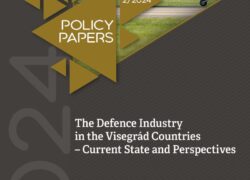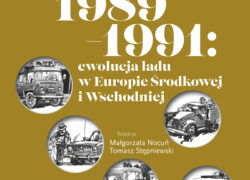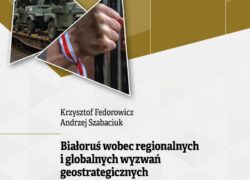On 2 July 2024, Hungarian Prime Minister Viktor Orbán paid an official visit to Kyiv for the first time in 12 years. It was also the first time since the outbreak of the full-scale war with Russia, where high-level government talks were held. The visit also included a meeting between V. Orbán and Ukrainian President Volodymyr Zelensky. They primarily discussed the issues of potential peace talks with Russia, the Hungarian national minority in the Transcarpathian region, and cooperation at the European Union (EU) level, which is directly related to Hungary’s presidency of the Council of the EU, which began on 1 July 2024.
Hungarian visits to Ukraine after the outbreak of full-scale war. Unlike their counterparts from other EU and North Atlantic Alliance (NATO) countries, Hungarian representatives diplomatically isolated Ukraine while maintaining relations with Belarus or Russia. There were a few episodes that were exceptions; in August 2023, then-Hungarian President Katalin Novák paid tribute in Bucha and took part in the Crimean Platform, during which she stressed that “the territorial integrity of Ukraine is indisputable,” and Hungary expressed its solidarity through humanitarian aid and participation in Ukrainian grain exports. In January 2024, Hungarian Foreign Minister Péter Szijjártó met in the city of Uzhhorod with his counterpart Dmytro Kuleba and the head of the Ukrainian President’s Chancellery Andriy Yermak. During the talks, the Hungarian side stressed the importance of the still unresolved issue of the rights of the Hungarian minority in Ukraine while noting the progress in this area, which has brought Ukraine closer to pre-accession negotiations with the EU. Prime Minister V. Orbán has met with V. Zelensky only on the occasion of joint events at the EU or UN since the start of the full-scale war in Ukraine. On 1 July 2024, Hungary began its six-month presidency of the Council of the EU, and in its program, declared the continuation of the EU’’s adopted policy towards Ukraine (“IEŚ Commentaries” no. 1154).
Course of the meeting. The bilateral conversation between the Hungarian PM and the Ukrainian president took place behind closed doors, and the entire visit was kept secret from the media. The departure of V. Orbán to Kyiv was only announced a day before the scheduled visit. According to Ukrainian sources, the main topic of the talks was the issue of reaching a ceasefire and creating a peace plan acceptable to both Ukraine and Russia. However, it is difficult to resolve whether this was not wishful thinking on the Ukrainian side. Prime Minister V. Orbán had already made it clear after the meeting that he had urged President V. Zelensky to reverse the steps of the peace plan so that a ceasefire would be established first and peace talks would follow. At the joint meeting of representatives of the two governments, energy issues and food security in the region were discussed, and the topic of the Hungarian minority, which has negatively affected Hungarian-Ukrainian relations for years, was raised. The series of meetings concluded with a ten-minute press conference in which V. Orbán favourably assessed the Ukrainian president’s “efforts for peace,”[1] contradicting the Hungarian government’s previous narrative that blamed both Ukraine and NATO for escalating the war and introducing a “war hysteria” (“IEŚ Commentaries” no. 1138). The Ukrainian president thanked V. Orbán for signing off on the June summit conclusions for peace in Ukraine and stressed the importance of “fundamental issues for both countries that can form the basis of an international agreement, especially the situation of the Hungarian minority and the opening of a Ukrainian school in Hungary.”
As the Russian Foreign Ministry reported the same day, “on the initiative of the Hungarian side,” a telephone conversation was held between P. Szijjártó and his Russian counterpart Sergey Lavrov regarding “the Ukrainian crisis (…) and ensuring the rights of all national minorities living in Ukraine.”[2] It is interesting to note that the conversation was not reported by the Hungarian Foreign Ministry, and the information posted on the Russian Foreign Ministry’s website was quickly removed. It is possible, therefore, that the conversation may have been of a technical nature and concerned the planned visit of representatives of the Hungarian government to Moscow and that the Russian side intentionally created the impression that the talks with Ukraine were being consulted at the Russian-Hungarian level.
Hungarian minority in Ukraine. One of the main factors responsible for the dynamics of Hungary’s relations with its neighbours is the more than two million-strong Hungarian minority in neighbouring countries. Its presence is a result of the unfavourable settlements of World War I and the Treaty of Trianon from Hungary’s perspective. The Hungarian minority in Ukraine is relatively less numerous than that living in, for example, Romania (according to the 2001 census, about 150,000 ethnic Hungarians lived in Ukraine), but remains geographically concentrated in the Transcarpathian region. From Hungary’s perspective, however, it is important not because of its numbers. Hungary’s foreign policy is guided by the assumption that it cannot allow any manifestation of discrimination against the Hungarian minority in any of its neighbouring countries, as this could risk demands for concessions or similar practices (e.g., less liberal policies toward minorities) from other neighbours. A major issue in Hungarian-Ukrainian relations has been the restriction of access to Hungarian-language education for second-level elementary school students in Ukraine.[3] The Hungarian state, circumventing Ukrainian law, has begun subsidizing private Hungarian schools in the Transcarpathian region from the state budget. In late 2023, Ukraine made significant changes to the law on minorities, which liberalized these issues for students receiving education in one of the official languages of the EU. This was due to conditions imposed on Ukraine by the European Commission. These changes led, among other things, to the establishment of a negotiating framework by the Council of the European Union (with Hungary’s consent) and the initiation of EU accession negotiations with Ukraine. From Hungary’s perspective, legal changes regarding the rights of national minorities in Ukraine were a prerequisite for developing relations with Ukraine at the highest level.
It should also be remembered that national minorities are not only a serious demographic resource in Hungarian politics but also a tool for influencing neighbouring countries. The country currently has about 9.6 million citizens with a downward trend. The process of integration of immigrants is difficult, and the ideal solution to increase the population is to reach out to “Hungarian” citizens from neighbouring countries. Moreover, during the second government of V. Orbán in 2010, there was a policy of granting Hungarian passports to ethnic Hungarians in neighbouring countries. This also contributed to building an electoral base for Fidesz. During the last parliamentary elections in 2022, 94% of citizens “from outside the country’s borders whose address is not in Hungary” voted for Fidesz.[4]
Ceasefire. At a conference after the meeting, V. Orbán announced that “the rules of international diplomacy are slow and complicated.” Accordingly, he asked the Ukrainian president to consider “reversing the order of the process and speeding up peace negotiations through a quick ceasefire within a certain timeframe that will give peace negotiations a chance.”[5] V. Orbán addressed the Ukrainian people, saying: “peace is a very important issue. The war you are living in has a very intense impact on the security of Europe.” He also stressed his gratitude for V. Zelensky’s sincere response on the issue. It is not clear from the published reports what the Ukrainian president’s response was or what position he presented on the ceasefire, but according to the Ukrainian government’s position, in the current situation, a ceasefire would only give Russia time to strengthen its defences in the occupied territories and expand its offensive potential. Hungary, however, is pursuing a different policy toward aid than its NATO partners, not transferring armaments and limiting itself to humanitarian support, training Ukrainian battlefield medics on its territory, and selling diesel fuel to Ukraine.
Conclusions
- Two important factors influenced the organization of the visit. First – the liberalization of the rights of national minorities, including the Hungarian minority in Ukraine, and second – the dual role of V. Orbán, who is now also the leader of the country holding the EU Council presidency. The visit to Kyiv on the second day after assuming the presidency is intended to showcase V. Orbán as a causal politician. In this way, the prime minister wants to rebuild Hungary’s image and prove that the government not only talks about peace but also takes concrete initiatives to achieve it. However, the formula of “reversing the order” of the peace plan is unacceptable to the Ukrainian side as long as the defensive lines are not broken by Russia and as long as the West is interested in supporting Ukraine militarily. In the long term, V. Orbán’s actions are dangerous for Ukraine – it only strengthens Russia, whose military and political goals have not been realized.
- The visit to Kyiv is a signal that the government of V. Orbán is ready to adopt a pragmatic stance toward Ukraine if the conditions set by Prime Minister Orbán are met, as was the case with Sweden’s accession to NATO (“IEŚ Commentaries” no. 1073). Hungary’s policy remains multi-vectorial and aimed at immediate benefits, as exemplified by the consultations between the Russian and Hungarian foreign ministers on the day of V. Orbán’s visit to Kyiv.
- In the context of the visit, it is worth mentioning that the Russian-Ukrainian contract for the transit of Russian gas through Ukraine ends in 2024. Hungary is interested in continuing to receive/purchase Russian gas despite political promises to diversify supply sources. The US elections will also take place in the fall, with the Hungarian government strongly supporting Donald Trump, believing that the Republicans will bring about a change in Western policy toward the war and “bring peace to Ukraine” (“IEŚ Commentaries” no. 1081). They will be an important caesura for Hungary’s foreign policy.
[1] Kijev. Sajtótájékoztató Volodimir Zelenszkij ukrán elnökkel, https://www.youtube.com/watch?v=xlJX1RrKh8c [3.07.2024].
[2] Statement after telephone consultation, https://mid.ru/ru/foreign_policy/news/1960565/ [3.07.2024].
[3] The education law introduced in 2017, which included these reforms, did not target only the Hungarian minority, but was concerned with strengthening the Ukrainian language and weakening access to teaching in the languages of other minorities as well, due to objective conditions – mainly Russian-speaking.
[4] Országgyűlési képviselők választása 2022, Levélszavazás, https://vtr.valasztas.hu/ogy2022/valasztasi-informaciok/levelszavazas?tab=results [4.07.2024].
[5] Kijev. Sajtótájékoztató Volodimir Zelenszkij ukrán elnökkel, https://www.youtube.com/watch?v=xlJX1RrKh8c [3.07.2024].










